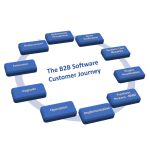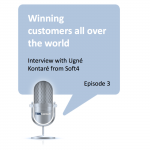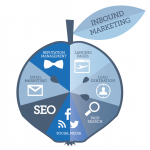Revenue Generation: Facilitating the Buyers’ Journey – Part 1
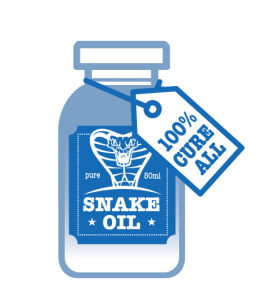 Download this series of posts as an ebook.
Download this series of posts as an ebook.
Companies lie or at least they promise way more than they can deliver. Do you trust advertisements? Do you believe what companies and people say about themselves and their products/services?
I don’t, you don’t and your potential customers don’t.
In an era where the price of communication has dropped, the volume of propaganda has increased correspondingly. Our customers are more careful than ever when they venture to find solutions for their needs, challenges, and opportunities.
At the same time, our industry is constantly developing improvements and inventing completely new value propositions that our customers can benefit greatly from if they only knew about them.
This is your challenge. You have invested in something that has great value, but so have others and if you don’t grab a substantial market share fast then your competitors will.
I hope this series of posts will give you inspiration on how you can improve your revenue generation process and achieve the market leadership position that I am sure you deserve.
A week in paradise
Let’s imagine that your sales organization within a week could sit face-to-face with all the potential customers in your target market [1] and have a conversation with them for one hour. If, six months later, you measure how many of those potential customers have bought a solution or are in the process of making a purchase decision within the next few weeks, then what would that percentage be?
No one is in the market for everything all the time
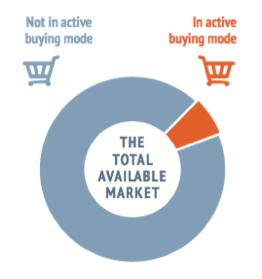 For most companies offering B2B solutions, only a small fraction of their potential market is in active buying mode at any one time.
For most companies offering B2B solutions, only a small fraction of their potential market is in active buying mode at any one time.
If the companies in your market invest in your type of product every fifth year and the active buying process takes six months, then only 10% of your total market will be in BANT buying [2] mode at any point in time.
This means that about 20% of your potential customers made an investment decision in your domain within the last year. Not all of them were positive so some could potentially be reactivated, but how many? A certain percentage of the companies in your market will be considering if they should take action on the areas where you provide solutions. Let’s say that 20% of your potential customers are at this stage and may become BANT active in twelve months.
In this scenario around 70% of the potential market is not actively looking for what you offer.
Can you somehow stimulate the interest of those that are not actively looking? Yes of course, you can, but my experience shows that only a minority can be activated right now. Activating the vast majority of the 70% will simply be too expensive compared to the outcome you can expect.
Can you at least position yourself so that you are considered when the time is right? Yes of course, you can, but can you do it in a way that will generate steadily increasing revenue with steadily decreasing customer acquisition cost?
Companies have all sorts of “issues” all the time
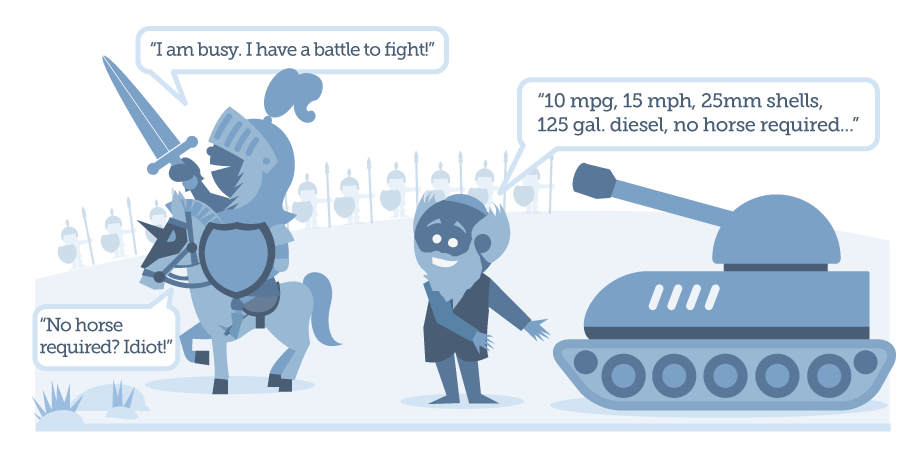 The good news for all of you working with revenue generation is that all companies anywhere in the world have all sorts of problems, challenges, and opportunities (let’s call them “issues”) all the time. Some of these issues are recognized by management and are on the list to be addressed soon, some are only visible to the people in the ranks and some are not visible to anyone in the organization right now.
The good news for all of you working with revenue generation is that all companies anywhere in the world have all sorts of problems, challenges, and opportunities (let’s call them “issues”) all the time. Some of these issues are recognized by management and are on the list to be addressed soon, some are only visible to the people in the ranks and some are not visible to anyone in the organization right now.
The challenge is that the vast majority of your potential customers are not receptive to messages focused on your product and your company [3]. The majority of your potential customers are not capable of intuitively drawing the relationship between your products and your company and an issue that they have. They may have the intellectual capacity, but they lack the time, the issue is currently considered insignificant, or it is not recognized at all.
To be continued.
Notes:
[1] If we define the market as all those companies that could benefit from using your products irrespective of whether they are in active buying mode, right now.
[2] We say that they are in BANT mode when they have access to a Budget, there is someone with Authority to make a decision, there is a recognized Need, and there is a Timeline for making the decision. BANT means that there is a high probability for a decision, but there is obviously no guarantee that the investment will be made within the deadline or will be made at all. Companies always have competing investments so the one involving your type of solution may lose to an indoor tennis court for the staff.
[3] We call such communication “Propaganda.”
–ooOoo–
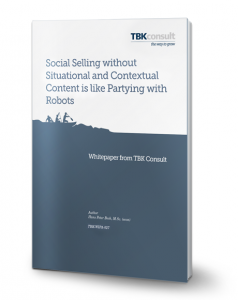 You may also be interested in reading the whitepaper “Social Selling without Situational and Contextual Content is like Partying with Robots.”
You may also be interested in reading the whitepaper “Social Selling without Situational and Contextual Content is like Partying with Robots.”
The whitepaper defines the three types of content and explains how you decide when to provide your potential customers which each type. It then introduces the concept of marketing and sales as the facilitation of the buyer’s journey and explains that the nature of your business model determines to what degree you can take advantage of social media.
The whitepaper recommends how to build the basic foundation for using social media for sales purposes and concludes that it must be an integrated and managed part of your marketing mix and should not be left entirely to the individual sales person’s initiative.





